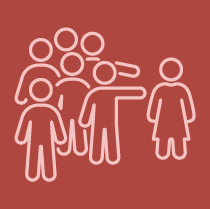How Pride Month Can Support the Mental Well-being of the LGBTQ+ Community
June is dedicated to celebrating and affirming the diverse identities and experiences of the Lesbian, Gay, Bisexual, Transgender, and Queer (LGBTQ)+ community. Pride month is a time to honor the historic Stonewall uprising of 1969 in Manhattan, which marked a pivotal moment in the ongoing struggle for LGBTQ+ equality and empowerment. It serves as a reminder of the efforts to achieve justice and equal opportunities for LGBTQ+ individuals in America and beyond.
The significance of this month lies in acknowledging the influence of LGBTQ+ Americans at local, national, and international levels. It is an occasion to celebrate the progress made towards the pursuit of equal rights for the LGBTQ+ community, and recognize what still needs to be done to ensure equal rights are a reality. Additionally, Pride month serves as a reminder of the lives lost to hate crimes and the devastating impact of HIV/AIDS.
As we seek to understand the lived experiences of the LGBTQ+ community, there is much complexity that the LGBTQ+ population faces when it comes to mental health. In honor of pride month, let’s look at some of the mental health realities for the LGBTQ+ community.
 LGBTQ+ individuals frequently encounter discrimination and social stigma. This can include societal prejudice, family rejection, workplace discrimination, and even exclusion within some healthcare systems. These experiences can lead to feelings of shame, self-doubt, and internalized homophobia or transphobia.
LGBTQ+ individuals frequently encounter discrimination and social stigma. This can include societal prejudice, family rejection, workplace discrimination, and even exclusion within some healthcare systems. These experiences can lead to feelings of shame, self-doubt, and internalized homophobia or transphobia.

LGBTQ+ individuals have distinctive stressors which include hiding one’s true identity, fear of rejection or violence, and constant awareness of potential discrimination. The cumulative effect of these stressors can lead to anxiety, depression, and other mental health conditions.
 Some LGBTQ+ individuals have diverse intersecting identities, such as race, ethnicity, socioeconomic status, and disability, which can compound the challenges they face and influence their mental health outcomes. It is essential to recognize and address these intersecting factors when providing support and care.
Some LGBTQ+ individuals have diverse intersecting identities, such as race, ethnicity, socioeconomic status, and disability, which can compound the challenges they face and influence their mental health outcomes. It is essential to recognize and address these intersecting factors when providing support and care.
 LGBTQ+ youth often struggle with bullying, both in person and online. This can result in increased levels of anxiety, depression, and thoughts of self-harm or suicide. It is crucial to provide support and safe spaces for LGBTQ youth to address these challenges and find a sense of community and connectedness.
LGBTQ+ youth often struggle with bullying, both in person and online. This can result in increased levels of anxiety, depression, and thoughts of self-harm or suicide. It is crucial to provide support and safe spaces for LGBTQ youth to address these challenges and find a sense of community and connectedness.

Many LGBTQ+ individuals face barriers to accessing appropriate mental healthcare. This can be due to a lack of understanding and training among healthcare providers, limited availability of LGBTQ-affirming services, and financial constraints. These barriers can prevent individuals from seeking and receiving the help they need.
The National Survey on Drug Use and Health (NSDUH) has provided valuable data on substance use and mental health issues among adults based on sexual identity. In brief summary, the research findings suggests that LGBTQ+ individuals are more likely to experience mental health disorders compared to their heterosexual and cisgender counterparts. These can include depression, anxiety, substance abuse, eating disorders, post-traumatic stress disorder (PTSD), and thoughts of suicide. This data helps to track changes over time and informs future research.
The findings from SAMHSA highlight the importance of addressing the unique mental health and substance use challenges faced by LGBTQ+ individuals. Targeted interventions, improved access to substance use treatment and mental health services, and increased support for this population are identified needs. It’s imperative that the health care system recognize and address disparities, so that we can strive towards better mental health outcomes and equitable care for all individuals, regardless of sexual identity (Medley, G., et al., 2016). In order to address the mental health realities of the LGBTQ+ community it’s crucial for organizations to create safe and inclusive environments, which combat discrimination, provide accessible mental health services, and promote social support networks.
Mental well-being can be fostered through understanding, acceptance, and equal rights for LGBTQ+ individuals. Pride Month plays an important role by promoting visibility, challenging stigma, providing safe spaces, advocating for LGBTQ mental health, and addressing disparities. By fostering understanding, acceptance, and equal rights, Pride Month supports the mental well-being of the LGBTQ+ population and contributes to positive mental health outcomes. Highlighted below are 5 ways that pride month can support the mental well-being of the LGBTQ+ community.
- Pride Month promotes visibility and empowermentfor LGBTQ+ individuals. By celebrating their identities and fostering a sense of community, it can contribute to positive mental health outcomes. Feeling seen, accepted, and supported can enhance self-esteem, reduce feelings of isolation, and promote overall well-being.
- Pride Month also serves as a platform to challenge and address stigma and discrimination faced by the LGBTQ+ community. By raising awareness and promoting education, it helps combat the negative societal attitudes that contribute to mental health issues. Reducing stigma can create a more accepting environment that supports the mental health of LGBTQ+ individuals.
- Pride Month events often offer safe and inclusive spacesfor LGBTQ+ individuals to connect, share experiences, and access resources. These spaces play a vital role in supporting mental health by fostering a sense of belonging, reducing social isolation, and providing access to LGBTQ+ affirming mental health services and support networks.
- Pride Month provides an opportunity to advocate for LGBTQ+ mental health and highlight the unique challenges faced by the community. It helps bring attention to the need for LGBTQ+ specific mental health services, training for healthcare professionals, and increased access to culturally competent care. By advocating for mental health support, Pride Month contributes to improved well-being for LGBTQ+ individuals.
- LGBTQ+ individuals often face disparities in mental health outcomes. Pride Month brings attention to these disparities and encourages efforts to address them. This can include promoting research, policy changes, and community initiativesaimed at reducing mental health disparities and improving LGBTQ+ mental health outcomes.
In summary, the mental health realities for LGBTQ+ individuals reveal significant disparities compared to their heterosexual and cisgender counterparts. Barriers to accessing appropriate mental healthcare further exacerbate the challenges. To address these realities, organizations must create safe and inclusive environments, provide accessible mental health services, and promote social support networks. By celebrating pride month and honoring the struggle for LGBTQ+ equality and empowerment we can continue to move forward in supporting the mental well-being of the LGBTQ+ community.
Throughout the month, events and activities will take place across the country, providing opportunities for people to come together and celebrate in the achievements and advancements made in the realm of LGBTQ+ rights. These gatherings also serve as a platform for reflection, remembrance, and solidarity, allowing us to honor those who have suffered injustice and discrimination. By commemorating their stories and experiences, we strive to create a more inclusive and compassionate society.
Ready to Learn More:
- Read Moving Beyond Change Efforts: Evidence And Action To Support And Affirm LGBTQI+ Youth
- Listen to Giving Voice To The LGBTQ+ Community
- Review University Of Nevada, Reno LGBTQIA2+ Resource Guide
- Take Providing Care for LGBTQ+ Adolescents: Free Self-Paced Online Class
References:
Medley, G., Lipari, R. N., Bose, J., Cribb, D. S., Kroutil, L. A., & McHenry, G. (2016). Sexual Orientation and Estimates of Adult Substance Use and Mental Health: Results from the 2015 National Survey on Drug Use and Health. Sexual orientation and estimates of adult substance use and mental health: Results from the 2015 National Survey on Drug Use and health. https://www.samhsa.gov/data/sites/default/files/NSDUH-SexualOrientation-2015/NSDUH-SexualOrientation-2015/NSDUH-SexualOrientation-2015.htm
Substance Abuse and Mental Health Services Administration. (2023). 2021 National Survey on Drug Use and Health: Among the Lesbian, Gay, or Bisexual (LGB) Population Aged 18 or Older. Substance Abuse and Mental Health Services Administration. https://www.samhsa.gov/data/sites/default/files/reports/rpt35319/2020NSDUHFFR102121.htm
Blog Post Tags:
Related Blog Posts
Related Learning Labs
Related Resources
.
- Buscar Tratamiento de Calidad para Trastornos de uso de Sustancia (Finding Quality Treatment for Substance Use Disorders Spanish Version)
- Finding Quality Treatment for Substance Use Disorders
- Focus On Prevention: Strategies and Programs to Prevent Substance Use
- Monthly Variation in Substance Use Initiation Among Full-Time College Students
- The National Survey on Drug Use and Health (NSDUH) Report: Monthly Variation in Substance Use Initiation Among Adolescents








